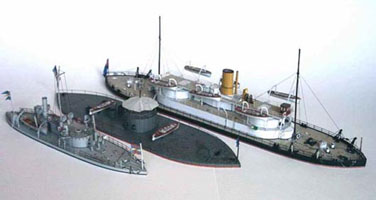

Scale is the same as adjusting the Vertical Gain knob in FFT mode and sets the scale in dB per division or Volts/div as is appropriate for the output type selection. Reference Level sets the amplitude of the top of the screen in units matching the output type. The Output type can be dBm, dBVrms, dBmV, dBµV, Vrms, and Arms(if a current probe is the source). The main vertical scale controls are Output (type), Scale, and Reference Level. The default is to set the resolution bandwidth automatically as confirmed by the Auto check box being checked. The Spectrum Analyzer reports back adapted values for the resolution bandwidth if the value entered is not achievable. Reducing the Resolution Bandwidth equals more memory. Resolution Bandwidth is equivalent to changing the Timebase setting to increase or decrease memory in FFT mode. Start and Stop frequencies can be specified with the keypad, similar to center and span. The Spectrum Analyzer dialog box, shown in Figure 1, contains all the controls easy frequency domain analysis.īasic view of the spectrum directly below the time domain signalĪlternately, Start Stop provides another way to adjust the position of the FFT trace.


Turn on the Spectrum Analyzer mode by pressing the front panel button. In addition to the spectrum display the Spectrum Analyzer mode includes a spectrogram display, available in either a 2 D or a 3D, which shows a history of how spectra have changed over time. The table also makes apparent frequency peaks that may not have otherwise obvious. Simply touch the table to order peaks by frequency or amplitude, selected peaks can be quickly moved to the center of the display. The automatic peak detect function identifies the highest peaks in the spectrum, labels them on the display and builds an interactive table of all peaks. With the Spectrum Analyzer mode the user is freed from the need to translate scope sample rate, memory, and acquisition length settings into frequency domain relevant units. Other settings for reference level and scale may also be made. Then, select an operational mode (Normal, Average, or Max Hold) for the spectrum display. Settings for normal or averaged FFTs as well as reference levels and scales are also available. Setup is simple - select a center frequency, span, and resolution bandwidth and the necessary sample rate and time-domain acquisition length of the oscilloscope are automatically determined behind the scenes. It allows users who are familiar with RF spectrum analyzers to start using the FFT with little or no concern about the details of setting up an FFT. Now, a spectrum analyzer like capability is available to simplify setup and use of the oscilloscope for analyzing frequency-dependent effects. Fast Fourier Transforms (FFTs) have long been part of oscilloscope toolboxes. Spectrum Analyzer Mode in HDO Oscilloscopes Simplifies Frequency AnalysisĪn oscilloscope provides powerful capability to debug frequency-related effects.


 0 kommentar(er)
0 kommentar(er)
